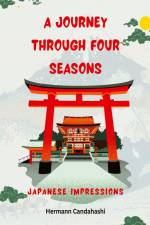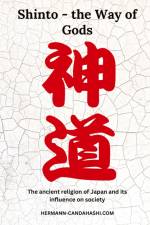von Hermann Candahashi
28,00 €
Tokyo - the metropolis of 100 Villages - is a place where the ordinary becomes extraordinary, where dreams come to life amidst a symphony of sights, sounds, and sensations. It is a city that pulses with energy, where tradition dances with innovation, and where every street corner holds a story waiting to be told. Welcome to Tokyo, a metropolis unlike any other, where life unfolds with breathtaking intensity.As I step onto the bustling streets of this vibrant city, a wave of excitement washes over me. Tokyo, a name that resonates with anticipation and wonder, is a tapestry of colors, contrasts, and contradictions. It is a place where ancient temples stand shoulder to shoulder with futuristic skyscrapers, and where the scent of incense mingles with the aroma of sizzling street food.The heart of Tokyo beats strongest in its people, an intricate web of diverse individuals who shape the city's character. From the salarymen meticulously navigating their daily routines to the geishas who embody elegance and grace, each person adds a brushstroke to the captivating portrait of this bustling metropolis.In the vibrant district of Shibuya, the youthful energy of Tokyo thrives. Here, amidst a sea of neon lights and towering billboards, a new generation carves out its identity. Harajuku, with its avant-garde fashion and eccentric street styles, is a testament to the boundless creativity that flourishes within these streets. And as night falls, the world-famous Shibuya Crossing transforms into a mesmerizing spectacle, as thousands of pedestrians converge in a symphony of movement, a visual symphony that captures the essence of Tokyo's kinetic spirit.Yet Tokyo's charm extends beyond its modern facades. In the serene gardens of the Imperial Palace, time seems to stand still. As I stroll through the meticulously manicured landscapes, surrounded by ancient stone walls and tranquil moats, I am transported to a different era, where the whispers of history echo in every breeze. Here, amidst the cherry blossom trees in bloom, I am reminded of the fleeting beauty that graces this city each spring, painting the landscape in delicate shades of pink.But Tokyo is not just a city of dreams and beauty; it is a place of resilience and strength. The Great Kanto Earthquake of 1923, the devastation of World War II, and the more recent challenges faced after the 2011 Tohoku earthquake and tsunami-all have tested the spirit of Tokyo and its people. Yet, time and again, this metropolis has risen from the ashes, rebuilding and reinventing itself with a determination that is awe-inspiring.To truly understand Tokyo, one must venture beyond its well-trodden paths. The historic district of Asakusa, with its centuries-old Senso-ji Temple, offers a glimpse into the city's past, a reminder of the traditions that have withstood the test of time. A boat ride along the Sumida River reveals a different perspective, as the city's modern skyline gives way to a tapestry of old wooden houses and hidden gems.And then there is the food, a culinary odyssey that tantalizes the taste buds and ignites the senses. From savoring the delicate artistry of sushi at Tsukiji Fish Market to indulging in a bowl of piping hot ramen in a narrow Shinjuku alley, Tokyo's food scene is a journey in itself. It is here, amidst the bustling izakayas and hidden gems tucked away in the backstreets, that one truly experiences the heart and soul of this city.










